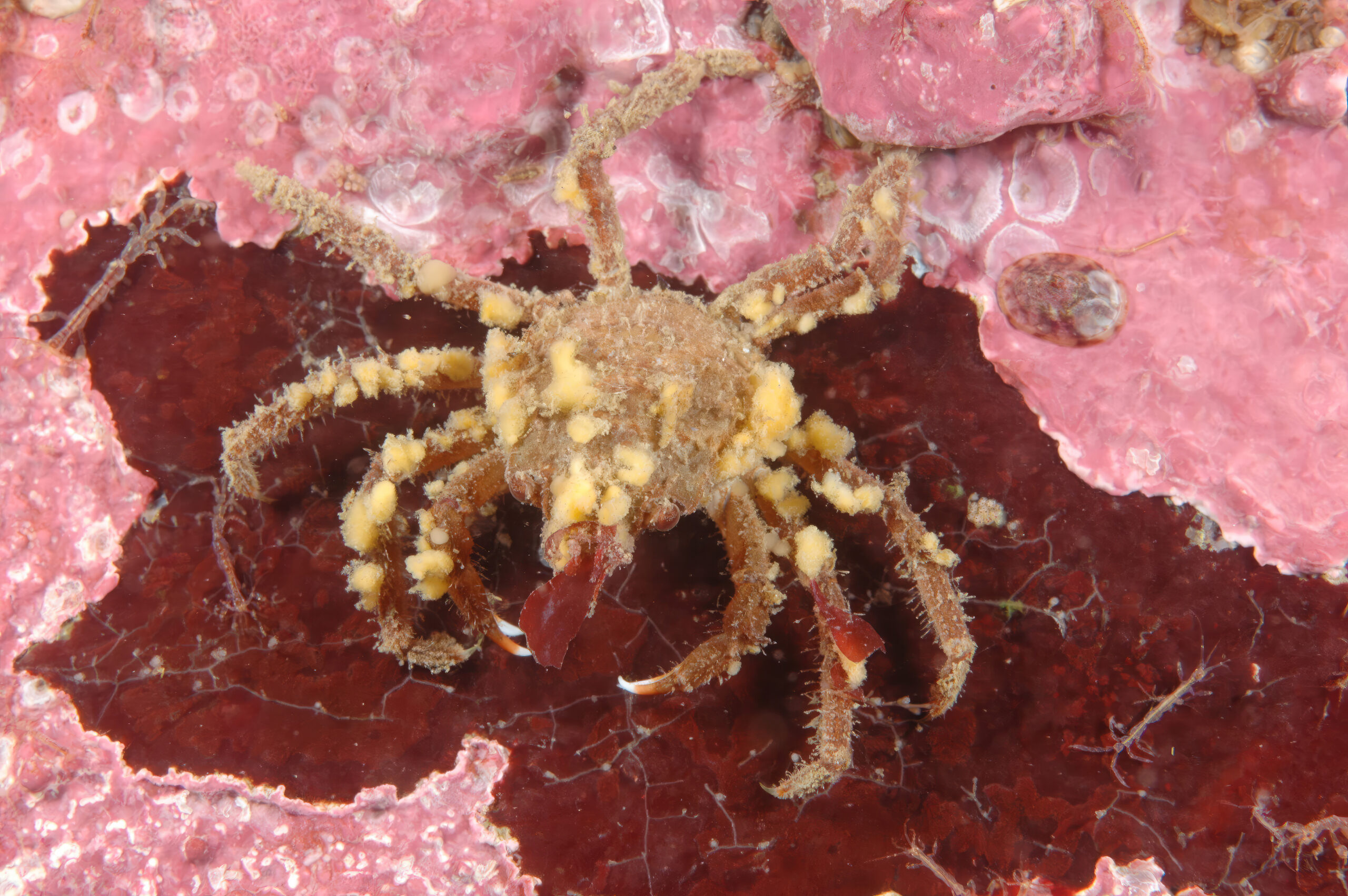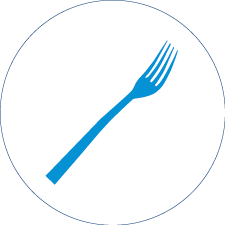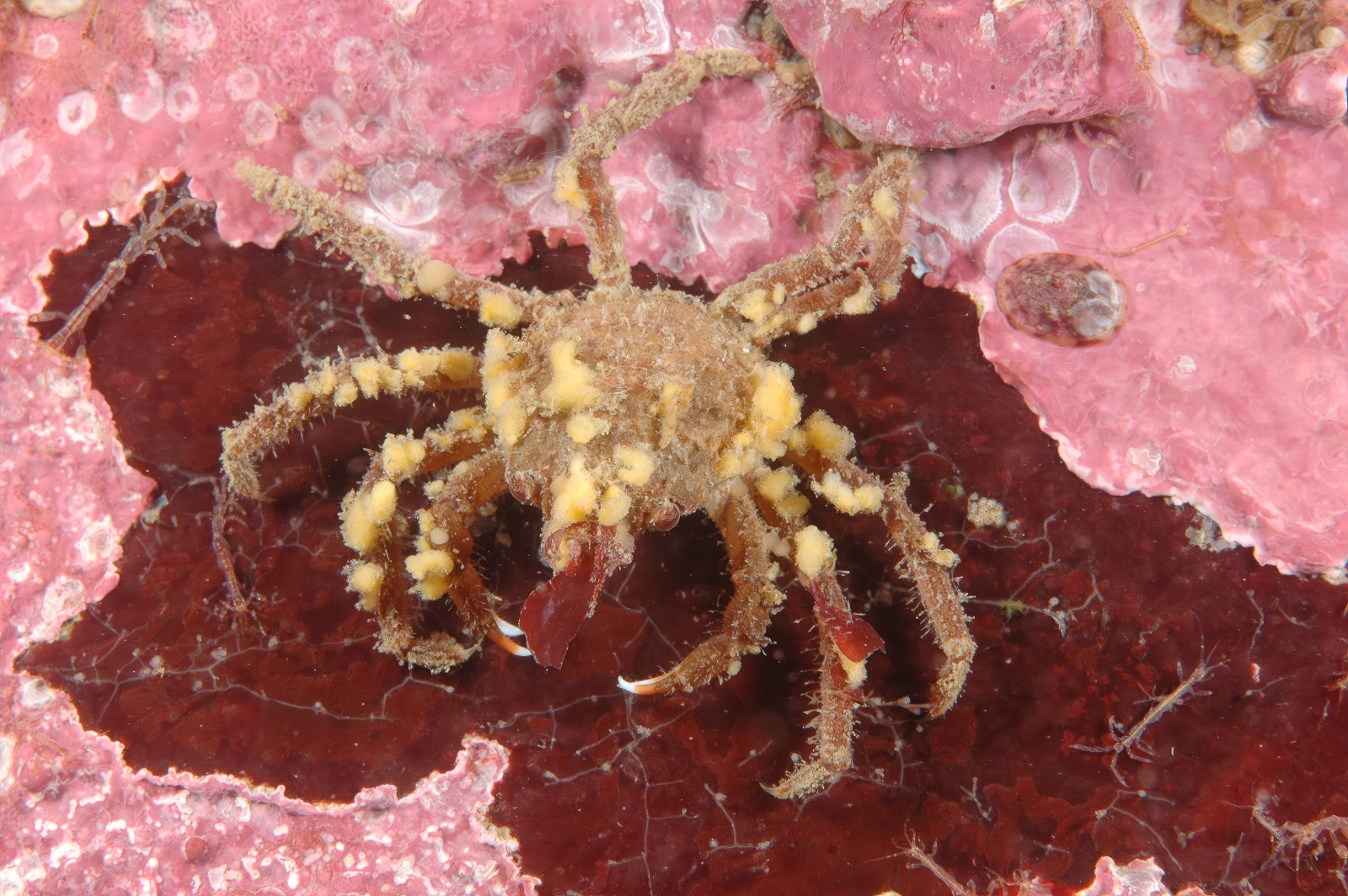
SIZE:
Up to 10.5 cm for males and 6.5 cm for females.
LIFE EXPECTANCY:
A few years after the terminal moult.
LIFE CYCLE:
Sexual maturity is attained when it reaches around 4 to 6 cm in length for the male and 3 to 4 cm for the female.
In spring, the males carry the females until they are ready to mate. They transfer the sperm using their forelegs. A few days to a few weeks later, the female lays light orange eggs, which it carries until they hatch. The larvae remain in the water column before transforming into a tiny crab that settles on the bottom.
Toad crabs grow by moulting. The frequency of moults decreases with age. After the last moult, called the terminal moult, the crab reaches its final size. Once this size has been attained, the female is ready to reproduce.
A constantly growing armor
The crab’s outer shell is inextensible. It therefore needs to moult to grow. The crab forms a new shell under its old one. When it is ready, the crab gradually sheds its “old armour.” The new carapace is soft and takes some time to harden. The crab is therefore very vulnerable after moulting.
The toad crab has a pear-shaped body with a rounded base. The head is pointed and consists of two thin horns. Its shell is brownish red, brighter and pinker after moulting, often adorned with algae and invertebrates, which contribute to camouflage. Its legs are long and slender.
They live on the seabed, usually less than 60 m depth, but can reach depths of up to 400 m.
Toad crabs live in sandy and rocky areas, tolerating temperatures ranging from −1 to 15 °C.

Its shell is often adorned with algae and invertebrates, which contribute to camouflage.
Credit: Richard Larocque, photo taken in Les Méchins.
PREYS:
Seaweeds
Small crustaceans
Organic matter
Crabs help to clean the oceans. They feed on plants and organic matter.
PREDATORS:
Fish
Seabirds
MACHINES:
Traps.
REGULATIONS:
- Limited number of permits
- Gear type
- Quota
- Minimum size
- Fishing season, depending on the zone
In Québec, fishing targets two species that are not differentiated during offloading: Hyas araneus (toad crab) and Hyas alutaceus (lyre crab). Both toad and lyre crab fishing began in the St. Lawrence in the mid-1990s.
According to the exploratory fishing carried out in recent years, the harvest appears to be sustainable, as its scale is limited. However, a better understanding of the biology of both species and the evolution of how stocks are affected by harvesting is needed to ensure the sustainable development of this type of fishing.
Toad crab is a Smarter seafood-listed species.
BENEFITS:
Its lean meat is an excellent source of protein, zinc, vitamin B12 and omega-3 fatty acids.
LET’S COOK:
Delicate and stringy texture. Fine, salty taste with hints of hazelnut. In addition to the meat, the eggs and gonads are also appreciated. The digestive system, which is greenish grey to orange-yellow, is edible but can accumulate toxins. Therefore, it should be eaten with caution.






